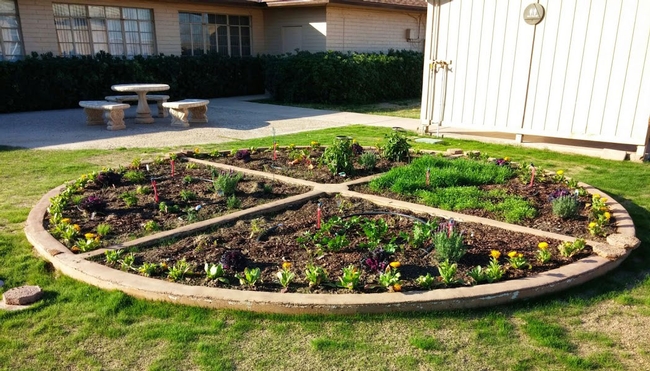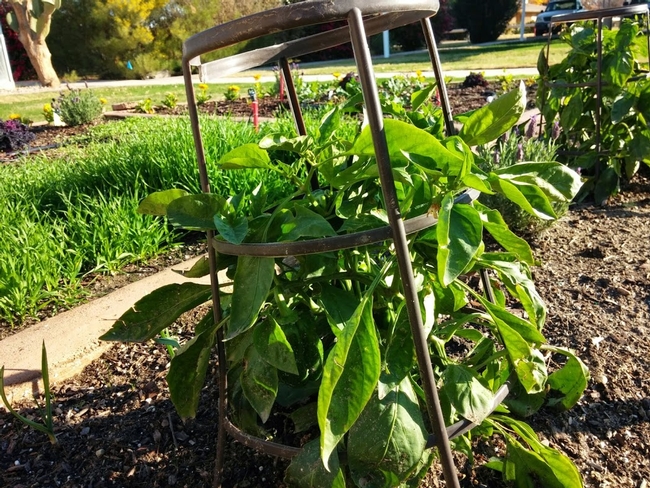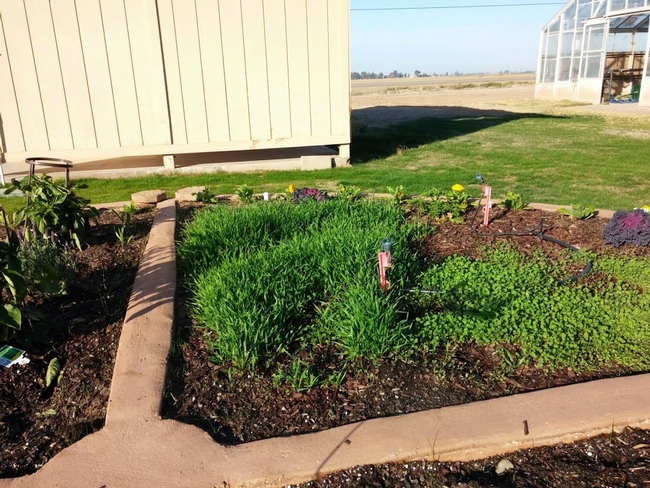
“Pizza can be a healthy meal, if you build it right,” said Stephanie Collins, outreach assistant at the Desert REC. “We can teach kids to add vegetables and educate them about whole grains and non-fat cheese.”
Collins initially envisioned the pizza garden teaching tool when she joined UC Cooperative Extension four years ago as a nutrition educator. The recent removal of a large tree stump made the location available.
The pizza garden will be part of the center's UC FARM SMART program, in which about 5,000 school children and “snowbird” winter residents annually visit the station to learn about UC's ongoing agricultural research in the desert area, tour the 255-acre facility on a hay wagon and taste products that are grown in the vicinity.

“Alfalfa is cheese in the making,” Collins said.
Tomatoes, onions and arugula are planted in the next wedge. The tomatoes are used for traditional sauce and onions are a healthy and flavorful topping, but arugula?
“Arugula is great on pizza,” Collins said. “It has a strong, peppery flavor.”
In another section, visitors can smell, feel and taste the herbs that season pizza sauce. Oregano, basil, sage, thyme, chives, parsley and rosemary fill the third wedge.
The fourth section holds bell peppers and rhubarb.

The garden is encircled with marigolds for the appearance of crust, and the wedges are dotted with a variety of non-pizza plants, like ornamental kale, vinca and lavender. These plants also serve an educational purpose, said Sam Urie, the UC FARM SMART manager at the Desert REC.
“A diversity of plants attracts beneficial insects, so they help the garden out,” Urie said.
The mostly senior citizen visitors pay $20 per person for the station tour, which includes a homemade lunch featuring locally produced foods. This year, the centerpiece of the meal will be carrot-ginger soup.
The visitors' fees help offset the cost of the tours for local children, who pay just $3 each.
For more information or to schedule a tour, contact Urie at (760) 791-0261, surie@ucanr.edu.
An initiative to enhance competitive and sustainable food systems is part of the UC Division of Agriculture and Natural Resources Strategic Vision 2025.